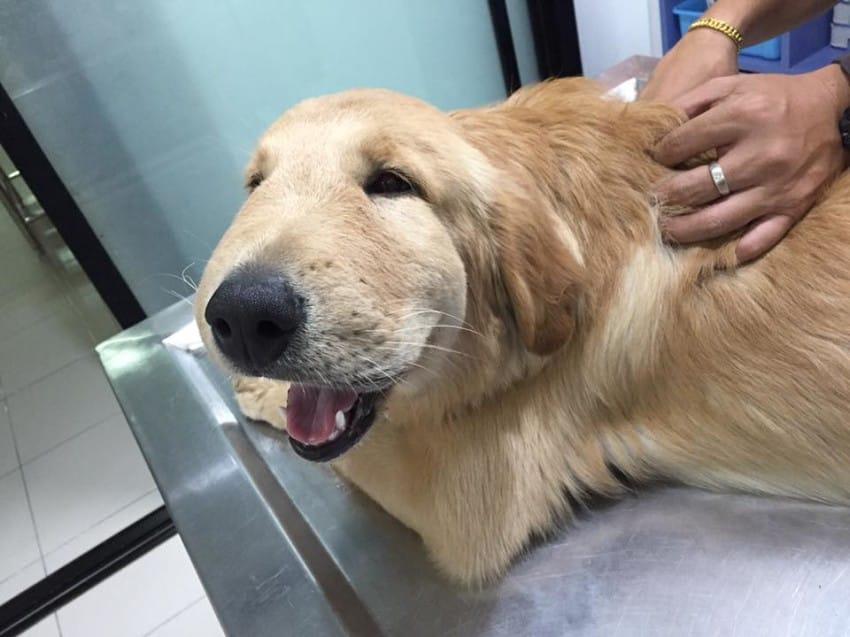It’s crucial to remember that anaphylaxis is a rare occurrence. The immune system of the body overreacts to the foreign protein or chemical, causing an overreaction. Anaphylaxis is assumed to be inherited or familial in most cases. An anaphylactic reaction, also known as anaphylaxis, is an allergic reaction to foreign material, most commonly a foreign protein molecule, known as an allergen or antigen.

The immune system triggers an allergic reaction in response to a triggering substance. To combat the perceived infection, the body recognizes the material as hazardous and releases histamines and other inflammatory molecules. The severity and symptoms of allergic responses in dogs vary. This usually happens in response to a well-known allergen that your dog has previously encountered.
Anaphylactic shock, or simply anaphylaxis, is a term used to describe extremely severe allergic responses. When left untreated, this is a life-threatening disease; however, most dogs will recover if given treatment in a timely manner. Allergic reactions can range from a little localized reaction to a widespread systemic failure affecting nearly all of the body’s major organs. In dogs, severe allergic reactions cause severe gastrointestinal and respiratory problems.
However, in anaphylactic shock, the body’s excess histamines cause low blood pressure, smooth muscle spasm, capillary dilation, and edema. Anaphylactic shock affects the lungs in most animals and causes respiratory distress, but in dogs, the liver is the principal organ damaged by the reaction.
If a dog is strongly sensitive to an allergen or antigen, any exposure to it might cause anaphylactic shock, however, the following are the most prevalent allergens.
- Insect bites
- Food or chemicals used to manufacture food
- Medications
- Injections
- Insect bites: Wasp, fire ant, and bee stings normally cause only redness and swelling at the sting or bite site, but anaphylaxis can develop if a dog is strongly sensitive to them.
- Medications: Anaphylaxis can develop if your dog is allergic to a drug and takes it.
- Vaccines: Vaccines, like pharmaceuticals, can cause adverse reactions in certain dogs. Vaccines contain a variety of chemicals that might induce anaphylaxis in dogs.
- Food or chemical: There are some foods or chemicals that if ingested by a dog, will trigger anaphylactic shock.

Table of Contents
Signs and symptoms of Anaphylaxis Reaction in the dog
- Sudden diarrhea
- Itching or redness at the contact site
- Excessive drooling
- Vomiting
- Difficulty loud breathing
- Fast heart rate
- Seizures
- Weak pulse
- Pale gums
- Cold legs
Diagnosis of anaphylaxis reaction in dogs
A medical history of recent exposure to an offending chemical and the presence of distinctive clinical indicators are used to diagnose anaphylaxis. Allergic shock is usually diagnosed by a veterinarian based on the symptoms. Knowing the drug that causes the reaction and your dog’s medical history can also help. In order to save your dog’s life, treatment must begin right away.
Allergies in your dog should be diagnosed and monitored to avoid life-threatening situations. Veterinarians will investigate numerous options by exposing your dog to a little amount of the substances and monitoring his or her reactions. Even if a diagnosis is challenging, medicine can often be used to address the symptoms.

Prevention and Treatment
If you know your dog suffers from allergies, the best method to prevent anaphylactic shock is to keep him away from the allergen in question. If you don’t know what your dog is allergic to, keep an eye on him when he’s given drugs or immunizations to make sure he doesn’t have an adverse reaction. Also, when you’re outside, try to keep your dog away from stinging insects.
When a dog is in anaphylactic shock, the veterinarian will give it adrenaline in an emergency dose, usually by injection. Antihistamines and hydrocortisone are also frequently prescribed. To avoid a decline in blood pressure, the dog may require an IV as well as supplemental oxygen. It’s possible that your dog will need to stay in therapy for several days to ensure that all of his systems are back to normal.




